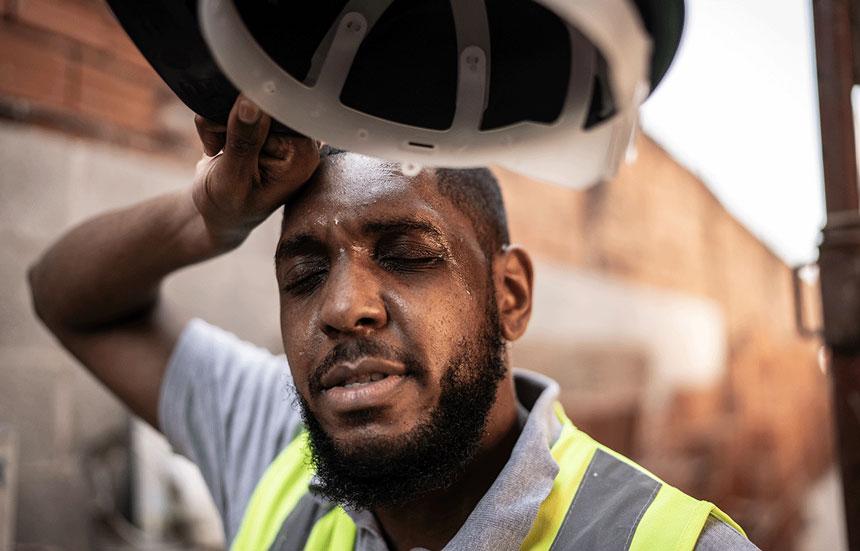How Extreme Heat Affects Our Health

It’s hot out there, folks. The summer of 2023, which has another month and half to run, is likely to be one of the hottest on record. Considering last summer was one of the hottest measured, according to the National Oceanic and Atmospheric Administration, these heat waves appear to be with us to stay.
Whether you’re a weekend warrior trying to squeeze in a few miles on your bike or just want to spend some summer days at the beach, this isn’t good news. The heat can be hard on our health.
Each year, hundreds of Americans die from heat-related illnesses. From 2018 to 2020, the Centers for Disease Control and Prevention measured an average of 1,000 deaths a year. (Some researchers suggest this number is low and could be as high as 12,000 deaths annually.) The number of heat-related injuries and illnesses is much, much higher. And just like the thermometer, these numbers are going up.
Who’s most at risk?
Generally, the youngest and oldest among us are most susceptible to heat-related illness and death, particularly kids under the age of 5 and those of us 60 and older. People who are overweight or have existing medical conditions like diabetes and heart disease are also disproportionately affected by heat. Being socially isolated and impoverished also play an outsized role in heat-related injuries.
But anyone who spends extended periods outside when the sun is high and the heat is on is at risk.
What happens when we overheat?
Our bodies do an amazing job regulating our temperature. Typically, our core temperature stays between 98 and 100 degrees Fahrenheit. When we’re hot, there two biological processes that keeps our core temperature in range:
Vasodilation, where our vessels expand to carry more blood to our extremities to lower our internal temperature. This brings heat from our interior to our skin and cools us a through the release of that heat.
Perspiration, where our sweat glands release sweat, which cools our skin as it evaporates. This helps lower our internal temperature.
As temperatures increase, these processes can fail, resulting in heat stroke and possibly death. For example, if we become dehydrated, our bodies can’t produce enough sweat to keep us cool. If our internal body temperature hits 104 degrees, we can experience heat stroke, which can cause brain damage and death.
Aging also affects our ability to mitigate heat. As we get older, our body’s response may not be as robust, which is why it’s important for seniors to limit exposure to the heat. Past heat waves have taken a higher toll on older Americans. By one estimate, as many as 80 percent of heat-related deaths are in the elderly.
Chronic illnesses can also affect our ability to ameliorate heat. Heat increases our risk of heart attack, it causes poorer air quality which can exacerbate asthma and COPD, and it can make blood glucose levels harder to manage for people with diabetes.
Medications can also make it harder for us to regulate heat. Betablockers, diuretics and calcium-channel blockers can interfere with thermoregulation. Alcohol and some illicit drugs can also slow our body’s response to heat stress.
How Heat Stroke Happens
As our internal body temperature starts to rise above 100 degrees Fahrenheit, we experience headache, nausea, vomiting, muscle cramps and fatigue. These are signs of heat exhaustion and should be treated immediately.
As our internal temperature goes above 104, however, our body can start to break down. The proteins and the membranes around the cells in our brain, for example, stop functioning correctly. The heat can cause heart muscle and blood vessel cells to break down. And it can damage other internal organs like our kidneys. This catastrophic damage can lead to death.
Heat stroke can happen whether we’re active outdoors or not. And the temperature doesn’t have to be that high for it to start. The National Weather Service says that heat stroke can be impacted by temperatures as low as 90 degrees – and this summer’s high temperatures have been a lot higher than that in many parts of the country.
Symptoms of Heat Exhaustion and Heat Stroke
If you want to avoid heat exhaustion or stroke, your best bet is to stay indoors when the temperature is above 90 degrees and limit exercise to early morning or evening hours. But if you have to be out in the heat, here’s what you should look out for:
Heat Exhaustion Symptoms: Heavy sweating; cold, pale, and clammy skin; fast, weak pulse
nausea or vomiting; muscle cramps; fatigue; dizziness; headache; fainting or passing out. If you begin experiencing these symptoms, move to a cool place and loosen your clothes. Put cool, wet cloths on your body or take a cool bath. Sip water (don’t guzzle it). Seek medical help if you are vomiting or if your symptoms get worse or last longer than one hour.
Heat Stroke Symptoms: High body temperature (103 degrees or higher); hot, red, dry or damp skin; fast, strong pulse; headache; dizziness; nausea or vomiting; confusion; and loss of consciousness. Call 9-1-1 immediately. Move to a cooler place. Put cool cloths on the person’s skin or put them in a cool bath. Do not give them anything to drink.
As we head into the last few weeks of summer, keep an eye on the thermometer. If you have to be outside, drink plenty of water. Spend time in the shade. Wear protective clothing. And keep an eye out for the symptoms above. Summer isn’t summer if you have to stay inside – but staying out of the sun and in the cool may be your best bet for a safe and healthy summer.


